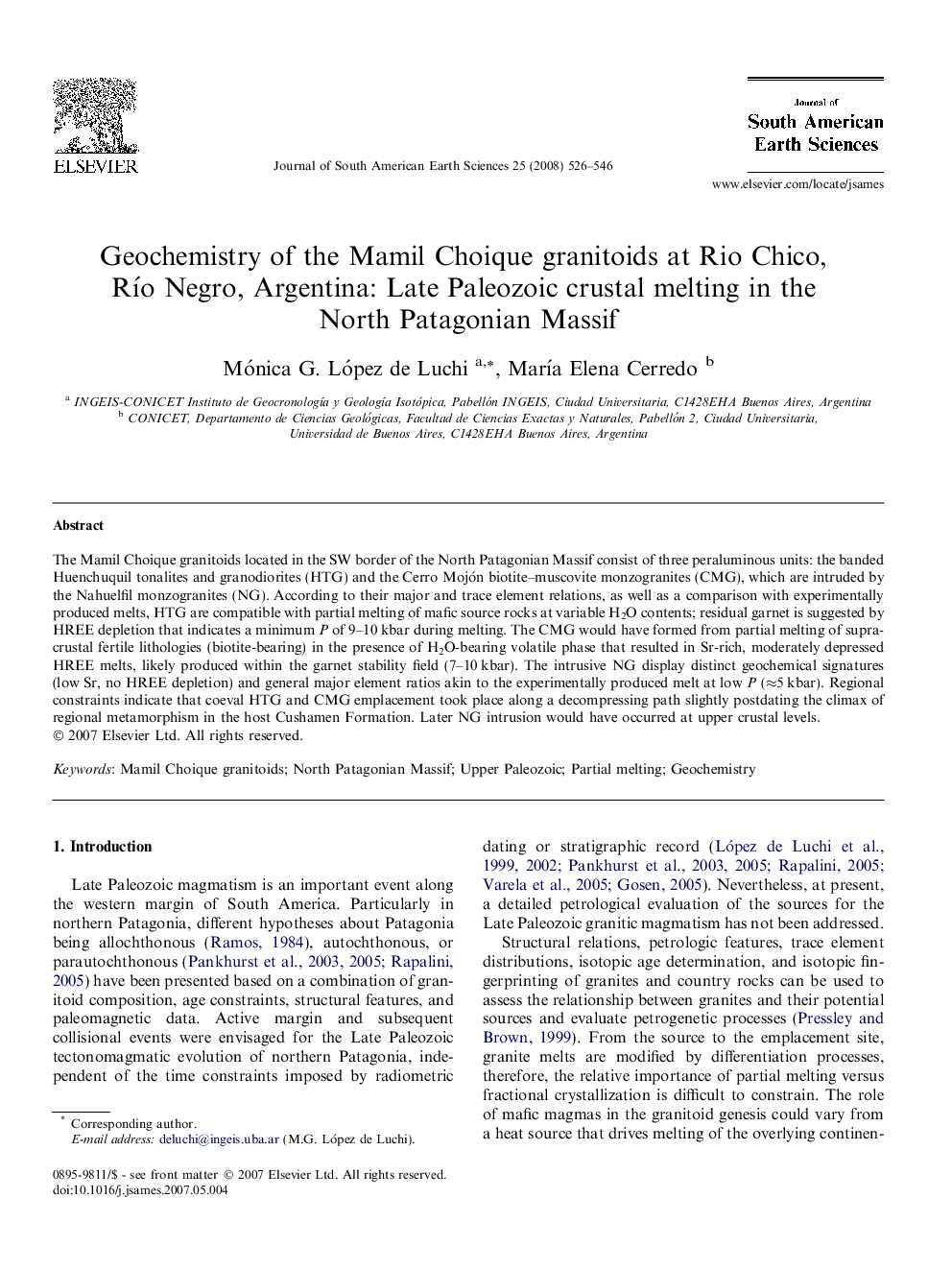| Article ID | Journal | Published Year | Pages | File Type |
|---|---|---|---|---|
| 4682886 | Journal of South American Earth Sciences | 2008 | 21 Pages |
Abstract
The Mamil Choique granitoids located in the SW border of the North Patagonian Massif consist of three peraluminous units: the banded Huenchuquil tonalites and granodiorites (HTG) and the Cerro Mojón biotite-muscovite monzogranites (CMG), which are intruded by the Nahuelfil monzogranites (NG). According to their major and trace element relations, as well as a comparison with experimentally produced melts, HTG are compatible with partial melting of mafic source rocks at variable H2O contents; residual garnet is suggested by HREE depletion that indicates a minimum P of 9-10Â kbar during melting. The CMG would have formed from partial melting of supracrustal fertile lithologies (biotite-bearing) in the presence of H2O-bearing volatile phase that resulted in Sr-rich, moderately depressed HREE melts, likely produced within the garnet stability field (7-10Â kbar). The intrusive NG display distinct geochemical signatures (low Sr, no HREE depletion) and general major element ratios akin to the experimentally produced melt at low P (â5Â kbar). Regional constraints indicate that coeval HTG and CMG emplacement took place along a decompressing path slightly postdating the climax of regional metamorphism in the host Cushamen Formation. Later NG intrusion would have occurred at upper crustal levels.
Related Topics
Physical Sciences and Engineering
Earth and Planetary Sciences
Earth and Planetary Sciences (General)
Authors
Mónica G. López de Luchi, MarÃa Elena Cerredo,
